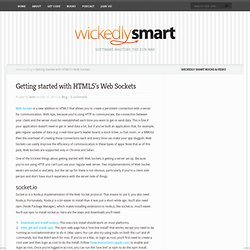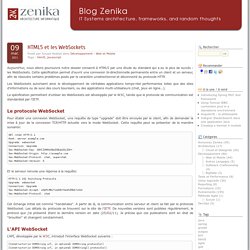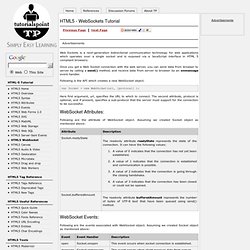

Gwt-ws - WebSockets for GWT. This project is intended to create a bit more than just a simple implementation of the html5 websocket-standard for gwt.

Indeed there is just a plain implementation you are free to use, just take a look in the "de.csenk.gwtws.client.js" subpackage. But why use just plain websockets? There are several drawbacks like you are only be able to transmit UTF-8 strings through the websocket connection. Inspired by the project gwt-ws provides some high level functionality to handle websockets and transmit data. Prepare GWT. Demos.
Jetty. jWebSocket - The Open Source Java WebSocket Server. WebSocket Gateway - HTML5 Edition. Tomcat, WebSockets, HTML5, jWebSockets, JSR-340, JSON and more. On my recent excursion into non-blocking servers I came across Comet, server push technologies and then Web Sockets.

I was late arriving at the Comet party, but I think I have arrived at the Web Sockets party just in time. The final standard is still being evovled and at the time of writing, the only browser supporting it by default is Chrome. So to get started, I had a look at what was around. Initially, I wasn't going to write a blog article about it, I just wanted to learn about this new thing. My only requirement was that the server implementation was Java based.
So I had a quick look at jWebSockets, Grizzly (Glassfish), Jetty and Caucho's Resin. Anyway, I wasn't really enthusiastic about any of the solutions I saw. An HttpServlet has methods for handling GETs, POSTs, et al. So without realising that this would actually be quite hard to implement, I set upon taking Tomcat 7 apart, and building web sockets into it, in a way which fulfilled my requirements. Getting started with HTML5′s Web Sockets. Web Sockets is a new addition to HTML5 that allows you to create a persistent connection with a server for communication.

With Ajax, because you’re using HTTP to communicate, the connection between your client and the server must be reestablished each time you want to get or send data. This is fine if your application doesn’t need to get or send data a lot, but if you’ve built an application that, for example, gets regular updates of data (e.g. a real-time sports leader board, a stock ticker, a chat room, or a MMOG) then the overhead of creating those connections each and every time can make your app sluggish.
Web Sockets can vastly improve the efficiency of communication in these types of apps. HTML5 et les WebSockets. Aujourd'hui, nous allons poursuivre notre dossier consacré à HTML5 par une étude du standard qui a eu le plus de succès : les WebSockets.

Cette spécification permet d'ouvrir une connexion bi-directionnelle permanente entre un client et un serveur, afin de résoudre certains problèmes posés par le caractère unidirectionnel et déconnecté du protocole HTTP. Les WebSockets autorisent ainsi le développement de véritables applications temps-réel performantes telles que des sites d'informations ou de suivi des cours boursiers, ou des applications multi-utilisateurs (chat, jeux en ligne...). La spécification permettant d'utiliser les WebSockets est développée par le W3C, tandis que le protocole de communication est standardisé par l'IETF. Le protocole WebSocket Pour établir une connexion WebSocket, une requête de type "upgrade" doit être envoyée par le client, afin de demander la mise à jour de la connexion TCP/HTTP actuelle vers le mode WebSocket. Et le serveur renvoie une réponse à la requête: HTML5 WebSockets Tutorial.
Advertisements Web Sockets is a next-generation bidirectional communication technology for web applications which operates over a single socket and is exposed via a JavaScript interface in HTML 5 compliant browsers.

Once you get a Web Socket connection with the web server, you can send data from browser to server by calling a send() method, and receive data from server to browser by an onmessage event handler. Following is the API which creates a new WebSocket object. Here first argument, url, specifies the URL to which to connect. The second attribute, protocol is optional, and if present, specifies a sub-protocol that the server must support for the connection to be successful. Following are the attribute of WebSocket object. Following are the events associated with WebSocket object. The HTML5 WebSocket API. The WebSocket protocol. Abstract The WebSocket protocol enables two-way communication between a user agent running untrusted code running in a controlled environment to a remote host that has opted-in to communications from that code.

The security model used for this is the Origin-based security model commonly used by Web browsers. The protocol consists of an initial handshake followed by basic message framing, layered over TCP. The goal of this technology is to provide a mechanism for browser-based applications that need two-way communication with servers that does not rely on opening multiple HTTP connections (e.g. using XMLHttpRequest or <iframe>s and long polling).
Please send feedback to the hybi@ietf.org mailing list. Status of this Memo This Internet-Draft is submitted in full conformance with the provisions of BCP 78 and BCP 79. Internet-Drafts are working documents of the Internet Engineering Task Force (IETF).